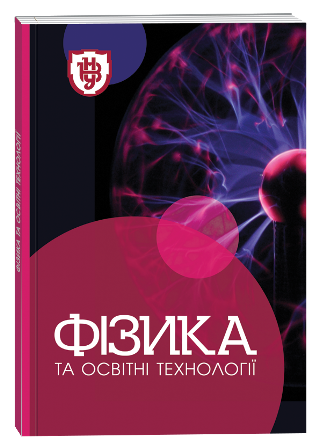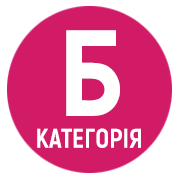METHODOLOGICAL FEATURES OF PHYSICAL PHENOMENA ON THE EXAMPLE OF INTERACTING OSCILLATIONS
DOI:
https://doi.org/10.32782/pet-2021-2-1Keywords:
modeling in education, computer modeling, programing, Visual Python, VPython, model of oscillatory movements, variation of parameters, model experiment, scalingAbstract
Methodological specifics of educational modeling of physical phenomena on the example of realization of the model of oscillations of the system of connected oscillators and the model of frequency interaction of two oscillators. The programming language Piton and the specialized library Visual are used for the realization of models. The programming code is provided. The model experiment is held. The trajectories of movement of corresponding particles are presented. The analysis of the results of modeling is held. The methodological specifics of modeling of physical phenomena in the context of laboratory physical practicum of physics and programming is analyzed. The peculiarity of this work is that educational modeling of physical phenomena here is considered in the context of conceptional cognitive psychology. Combination of the doctrines of cognitive psychology and methodological approaches to education in the domain of informatics and physics gave the possibility to consider the educational processes through the prism of the structural knowledge, its evolution, organizational hierarchy and portionality of the dozes of materials that modify this structure. Individual alghoritmic problems related to modeling of the physical processes are regarded in this research as the components of the holistic system that are the part of the laboratory practicum. The study argues that laboratory workshops in physics and programming in certain themes should be presented as a system of problems that are connected to each other. It is noted that from the point of view of the methodology of educational programming, it is desired that each task of the practicum is from one side the result of evolution of previous problems and their solutions, while from the other side, it should be the basis for the following task. The research focuses its attention on the key problems that serve as a basis for the whole set of problems. The study accentuates that analogical situation is with physical practicums, however, it is especially felt in the programming practicums by the students and educators that held the laboratory works. It is noted that the recently described structure of the problem for the practicums in the separate themes creates the understanding about the tree of problems, that should be tackled in the course of laboratory practicum in each theme. The research claims that educational activities in the domain of practical programming and in the experimental physics are similar since both require abstract logical and causal thinking, as well as strict structure of professional knowledge. In the practical educational programming activity and practical activity in physics, a lot of experiments are held. They check the correctness of work of the program in the process of its creation. The check on the correctness of the work of the program that model physical phenomena bring closer, even more, the closeness of these activities.
References
Зміст підготовки висококваліфікованого фахівця з інформаційних комп’ютерних технологій у контексті когнітивних процесів (на прикладі програмування). Інформаційні технології в освіті. 2008. Вип. 2. С. 66–73. URL: http://ite.kspu.edu/issue-2/p-66-73.
Головін М.Б., Головіна Н.А., Головіна Н.М. Модельний розгляд пізнавальних процесів, супутніх навчальному програмуванню. Психологічні перспективи. 2018. Вип. 31. С. 57–70. URL: http://nbuv.gov.ua/UJRN/Ppst_2018_31_7.
Гетманова Е.Е. Использование Visual Python для моделирования физических процессов. Компьютерные инструменты в образовании. 2005. № 4. С. 43–47.
Майер Р.В. Компьютерное моделирование. Учебно-методическое пособие для студентов педагогических вузов. Глазов : ГГПИ, 2015. 620 c.
Холодная М.А. Психология интеллекта: парадоксы исследования. Санкт-Петербург : Питер, 2002. 272 с.
Найссер У. Познание и реальность. Смысл и принципы когнитивной психологии. М. : Прогрес, 1981. 225 с.
Miller George A. The Magical Number Seven, Plus or Minus Two. The Psychological Review. 1956. Vol. 63. Issue 2. P. 81–97.
Чуприкова Н.И. Психология умственного развития: Принцип дифференциации. М. : Столетие, 1997. 478 с.
Головін М.Б., Головіна Н.А., Федонюк А.А. Аплікації з комп’ютерної фізики мовою Visual Python на прикладі моделювання силової взаємодії. Комп’ютерно-інтегровані технології: освіта, наука, виробництво. 2020. Вип. № 40. С. 16–22. URL: http://cit-journal.com.ua/index.php/cit/article/view/151.
Головін М.Б., Головіна Н.А. Специфіка навчальних дій, що містять комп’ютерне моделювання фізичних процесів. Комп’ютерно-інтегровані технології: освіта, наука, виробництво. 2018. Вип. 32. С. 10–18. URL: http://ki.lutsk-ntu.com.ua/node/139/section/4.








